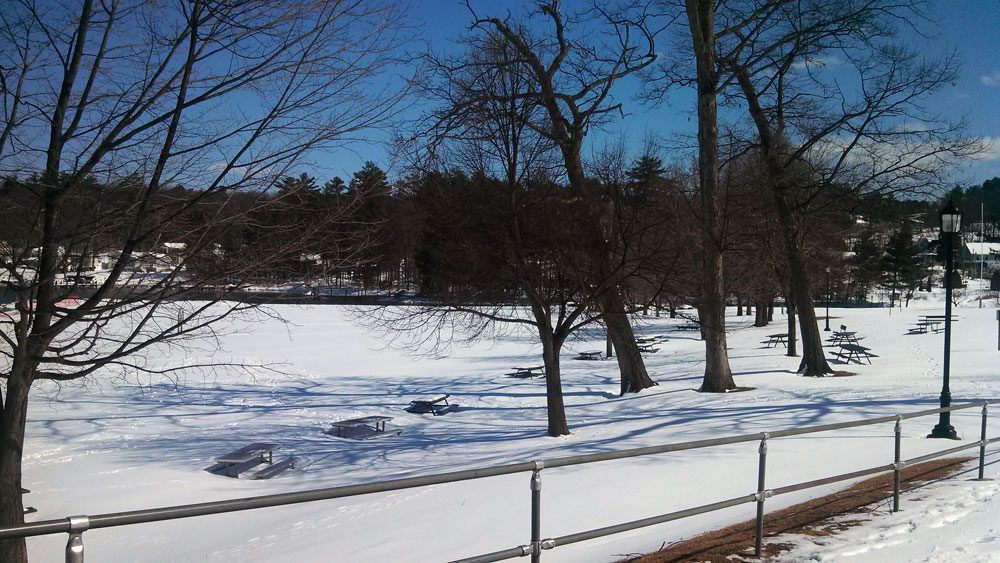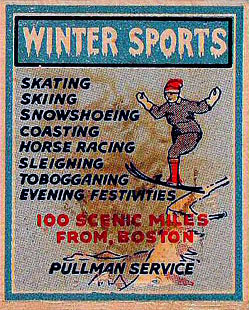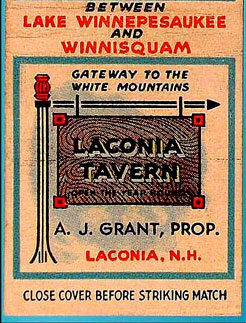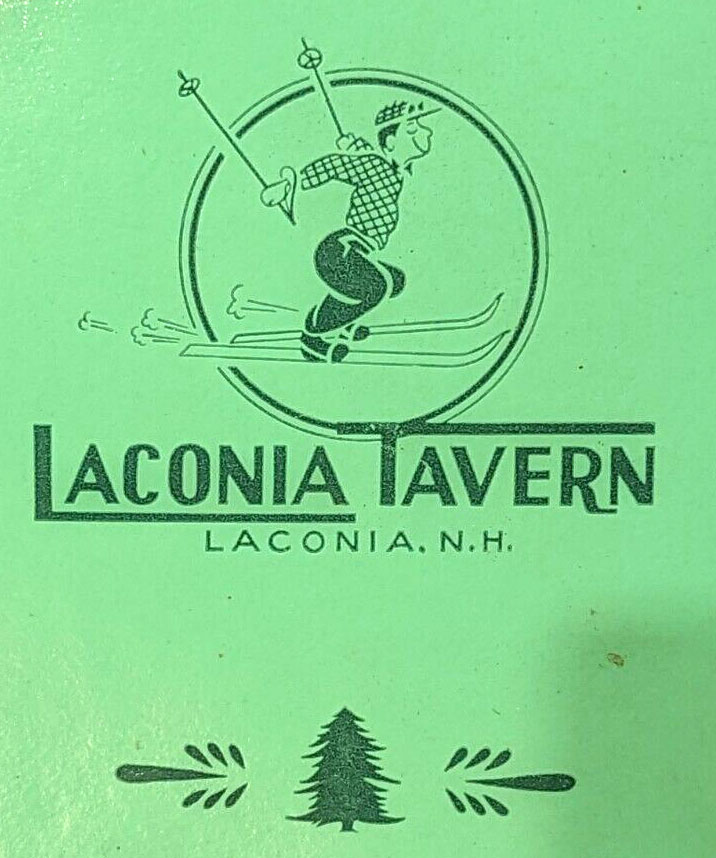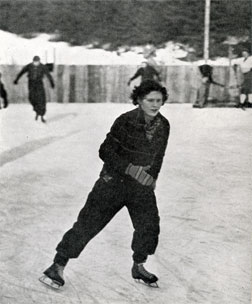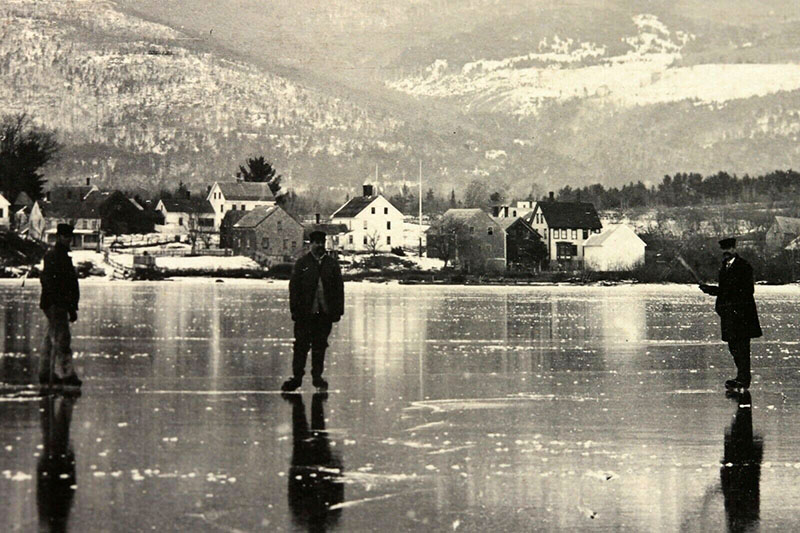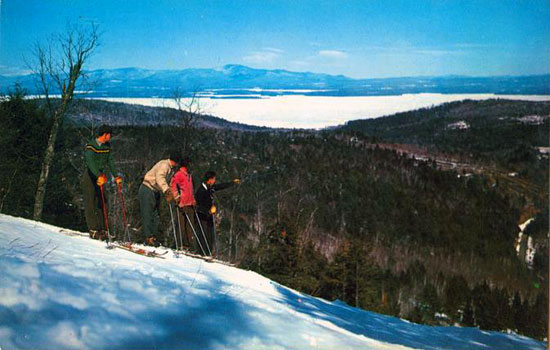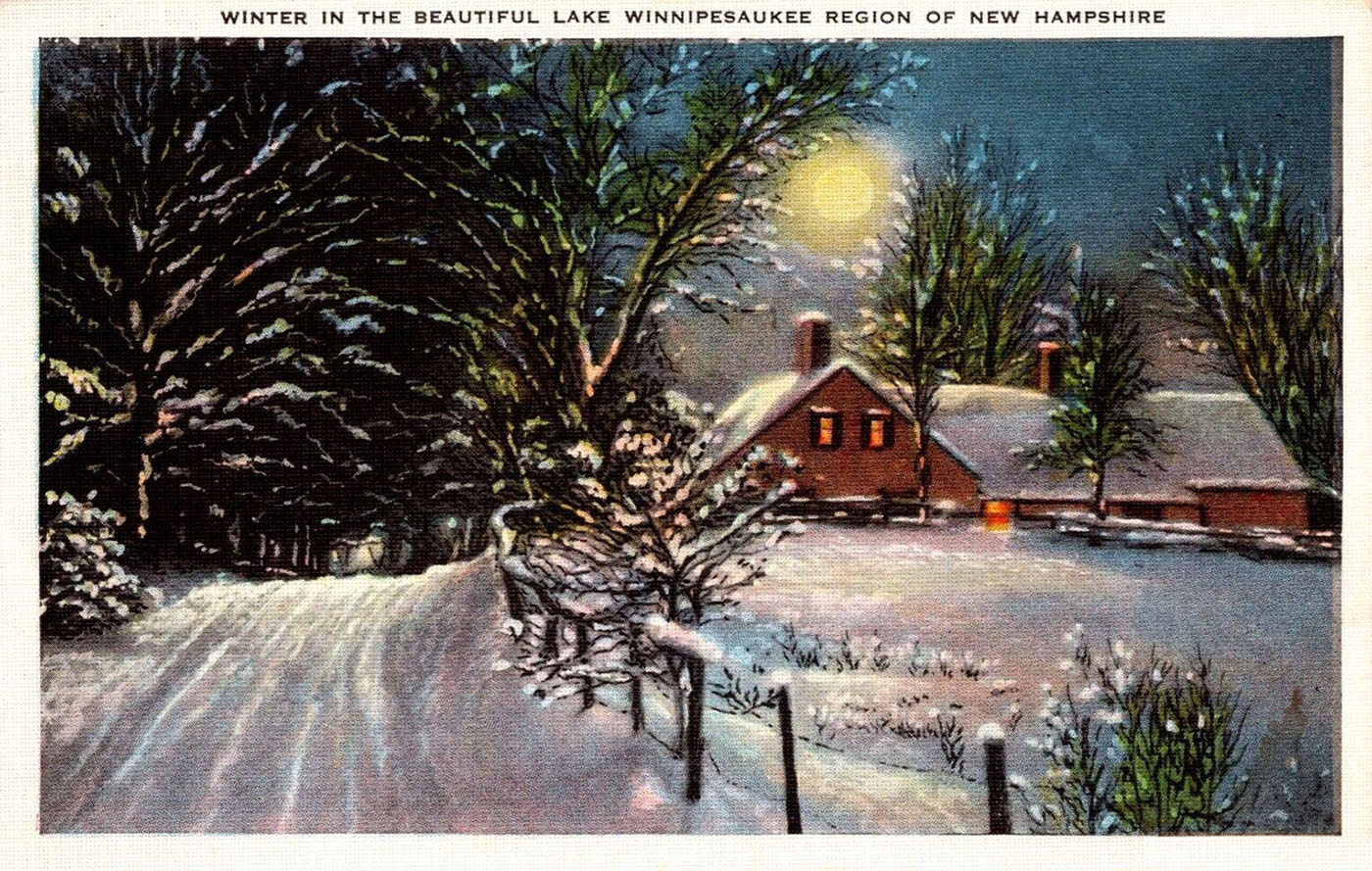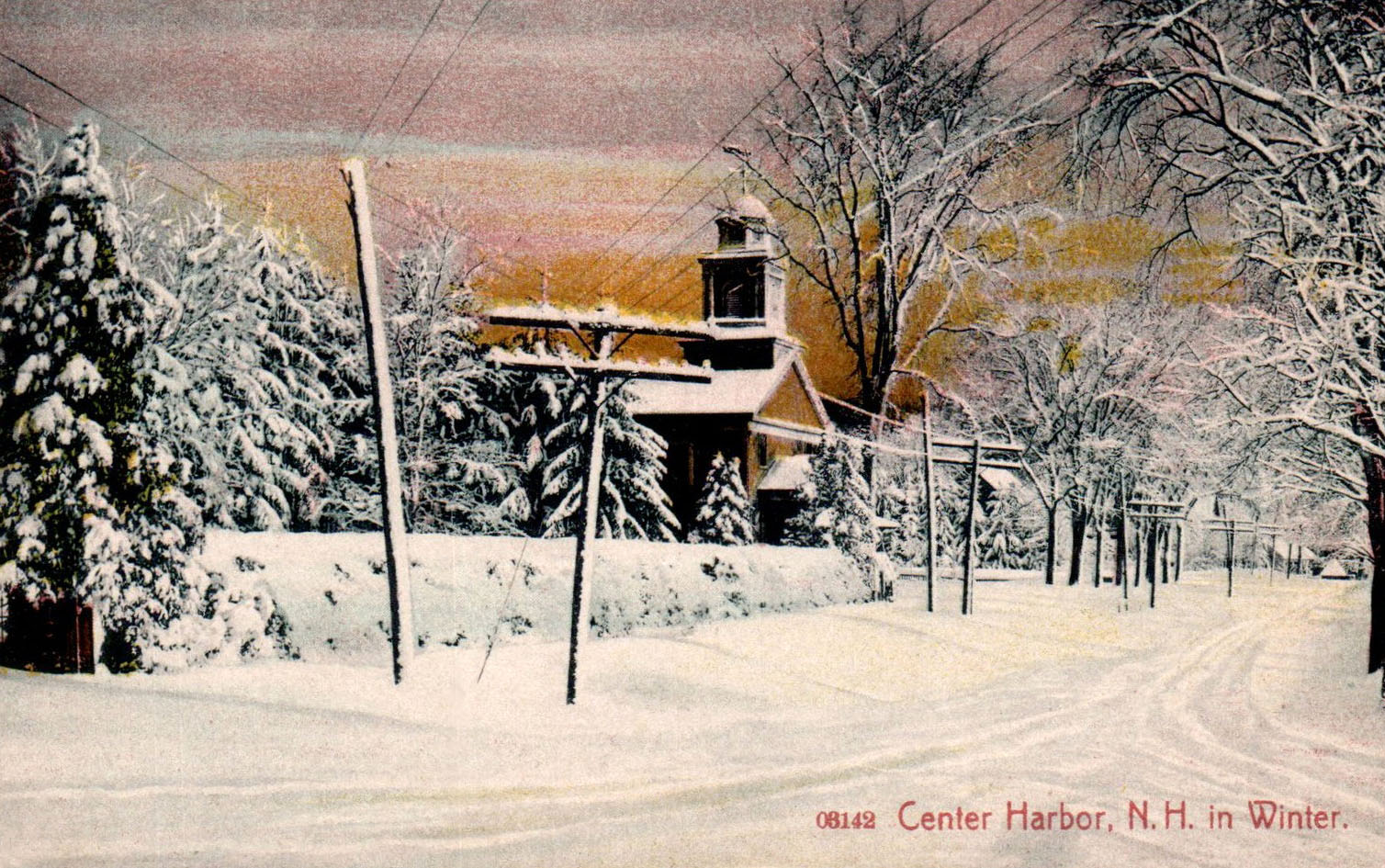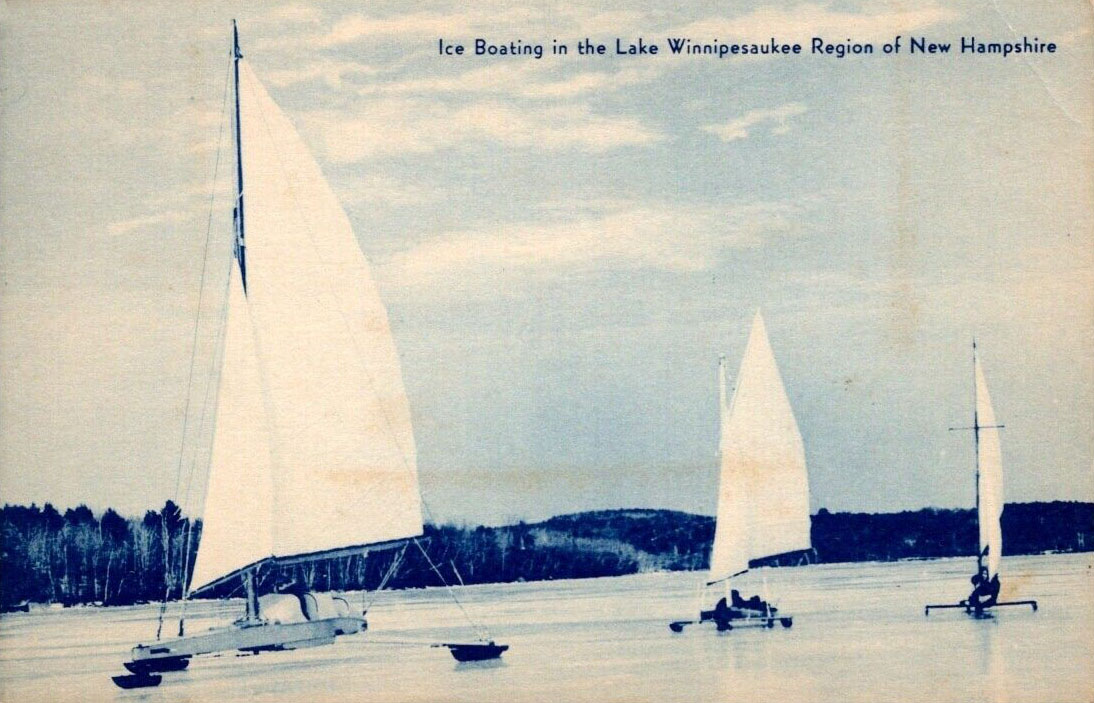Winter Sports
What about Winter sports?
Matchbook and Menu Cover, Laconia Tavern, 1930’s.
Some of the winter sports popular in the 1930’s, as shown in the matchbook cover above, are still quite popular today; this would include skiing, skating, and snowshoeing. Some 1930’s sports are still around, but much less popular than they were in the 1930’s; this would include coasting, sleighing and tobogganing, all of which involved sliding down a steep hill on an apparatus of some kind. One 1930’s winter sport, horse racing, has disappeared entirely. Back then, the horse races were held on the ice of Lake Opechee and featured sulky racing. (A sulky is a lightweight cart with two wheels and a seat for a single driver.)
Of course, there are new winter sports popular today that were unknown in the 1930’s, such as snowmobiling. And one of the most popular winter sports today, ice fishing, was certainly around in the 1930’s, but was not mentioned on the matchcover.
While in the past ice skating was practiced on frozen lakes and ponds, and even on city streets (the webmaster remembers when a portion of Lakeside Avenue was blocked off for ice skating), today most ice skating tends to take place on professionally prepared surfaces. The only indoor facility in the area, the Merrill Fay Arena (formerly the Laconia Ice Arena) (603) 528-0789, is located on Route 107 in Laconia. The arena is home to the New England Wolves of the Eastern Hockey League.
Laconia also has three outdoor rinks:
1) at Memorial Park, on the baseball field’s parking lot
2) at Leavitt Park, on the basketball court
3) at Opechee Park, on the actual lake in the Cove area (but only when the ice is at least 12″ thick).
Gilford has the covered outdoor Gilford Ice Rink on Varney Point Road in Gilford.
The view from Mount Belknap (Gunstock) circa 1960. Click here for a history of the resort.
While there is excellent skiing available only a few miles away at Gunstock, most visitors to Weirs Beach during the winter are here for one reason only, and that is to go snowmobiling. Belknap Snowmobilers publishes a trail map (available at the office of the Lakes Region Chamber of Commerce) showing several trails in Weirs Beach. One trail follows the railroad tracks. Another trail diverges to the West of the tracks in Paugus Bay, passing through the Paugus State Forest and alongside Hilliard Road before splitting in two, with the Northern branch of this trail continuing to Pickerel Pond and the Southern branch heading to the shores of Lake Winnisquam.
During the winter, Lake Winnipesaukee freezes solid enough that people do drive heavy vehicles across the ice. The practice can be dangerous, and extreme caution should be used, as almost every winter, vehicles do fall into the lake, sometimes with tragic consequences. Many snowmobilers like to ride the frozen ice of Lake Winnipesaukee, but there is no legal access to the Lake in the area of Weirs Beach, as the public beach is now fenced off in the winter, precisely to prevent such access. This is a matter of public safety, as the ice in the vicinity of the beach is very thin, due to the turbulence of the nearby Weirs Channel, the outlet from the Lake.
Snowmobilers need to keep on the State Snowmobile Trail (the railroad tracks) as they pass through the boardwalk area of Weirs Beach. The Weirs Beach boardwalk is fenced off in the winter, for its protection. Lakeside Avenue is also off-limits. The City of Laconia has not authorized snowmobiles to operate on any of its sidewalks or roads.
“Championship Skimobile Racing in New England” postcard.
This is a photo of the 1969 Kawartha Cup race held at Bryar Motorsport Park.
Ice boating was one of the winter time activities that is no longer seen at all on the big lake. It has been replaced by the sport of kite skiing on the ice, also known as snowkiting.










